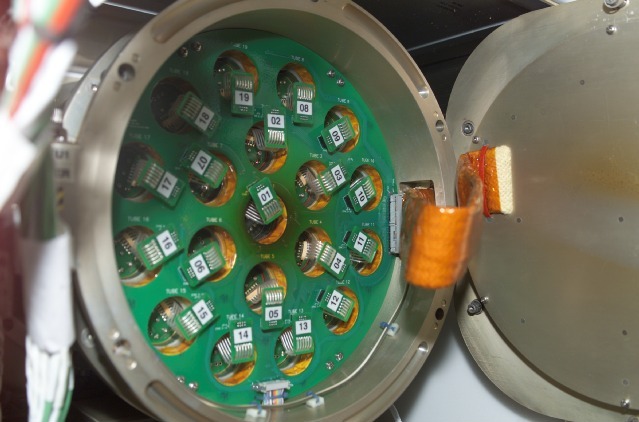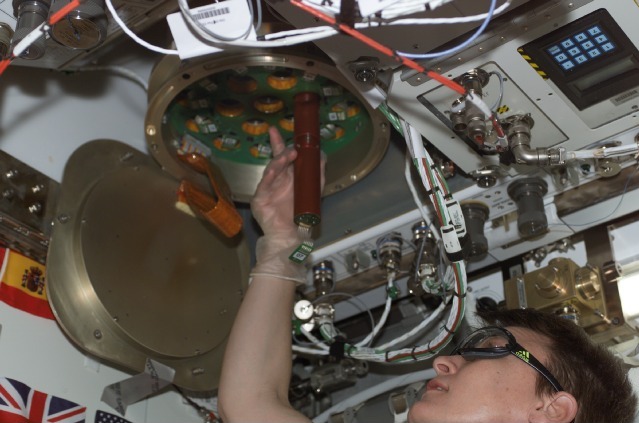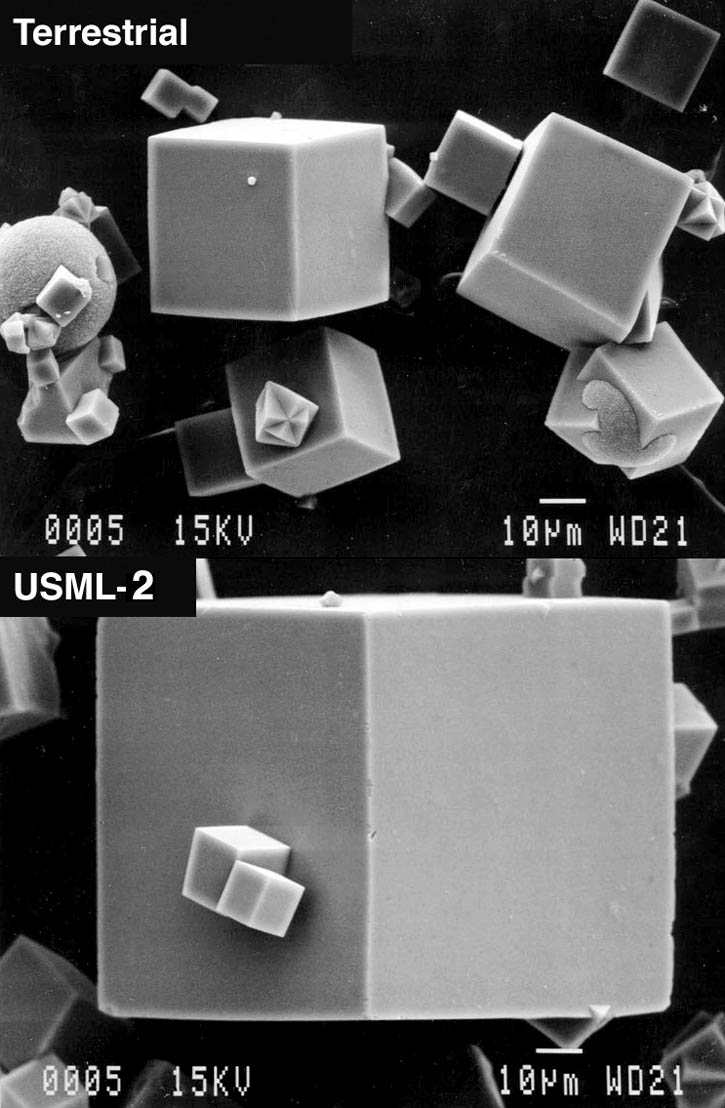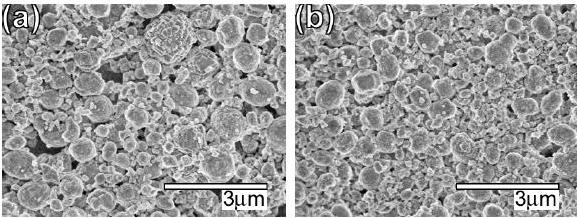Crystal Furnace in Space
 [Image: The crystal growth furnace; courtesy of NASA].
[Image: The crystal growth furnace; courtesy of NASA].This isn't news, but my days are made fractionally better by the knowledge that there is a "crystal growth furnace" birthing new geological forms in microgravity aboard the International Space Station.
 [Image: Another view of the crystal growth furnace; courtesy of NASA].
[Image: Another view of the crystal growth furnace; courtesy of NASA]."The Zeolite Crystal Growth (ZCG) furnace, which was derived from earlier shuttle models," NASA explains, "can grow zeolites, zeotype titanosilicate materials, ferroelectrics, and silver halides—all materials of commercial interest. The unit consists of a cylinder-shaped furnace, the Improved Zeolite Electronic Control System (IZECS), which includes a touchpad and data display as well as autoclaves. Two precursor growth solutions are placed into each autoclave, which mix during their stay in the furnace."
In the end, though, this research comes down to fossil fuels: "Zeolites form the backbone of the chemical processes industry, and virtually all the world's gasoline is produced or upgraded using zeolites. Industry wants to improve zeolite crystals so that more gasoline can be produced from a barrel of oil, making the industry more efficient and thus reducing America's dependence on foreign oil."
 [Image: Terrestrial and nonterrestrial zeolites compared, courtesy of NASA].
[Image: Terrestrial and nonterrestrial zeolites compared, courtesy of NASA].First, "the furnace heats up and crystals start to form, or nucleate," monitored only occasionally by the crew, while a "payload team on the ground" watches these crystals, like something out of a Charles Stross novel, "via download telemetry." Otherwise, "with the exception of loading the autoclaves into the furnace and turning the switch on, the crystal growth experiment operations are unattended by the crew."
Rare and unattended postgeological forms take shape in engines quietly aflame in space, new hearths for future astronauts, like William Blake gone Ballardian in earth orbit, cultivating crystal trays, supervised telemetrically by an audience far below.
 [Image: More comparative space crystallography, courtesy of NASA].
[Image: More comparative space crystallography, courtesy of NASA].In fact, there was an article seven years ago in New Scientist about cosmonauts running plasma-crystal experiments aboard the International Space Station, studying a type of matter that is atomically parked somewhere between liquid and solid: "Although the consistency of the [plasma] crystals is something like a viscous fluid, their internal structures closely resemble the atomic lattices seen in conventional solids."
But what's particularly interesting is that "one of the cosmonauts was so intrigued" by this strange new material form that "he decided to do extra experiments in his private sleep time"—a statement phrased perhaps deliberately vaguely, as if the writer was unable to resist this exquisite vision of obsessive-compulsive cosmonauts so intent on building crystals in space that they have found a way to do so even while dreaming.





Comments are moderated.
If it's not spam, it will appear here shortly!
Post a Comment